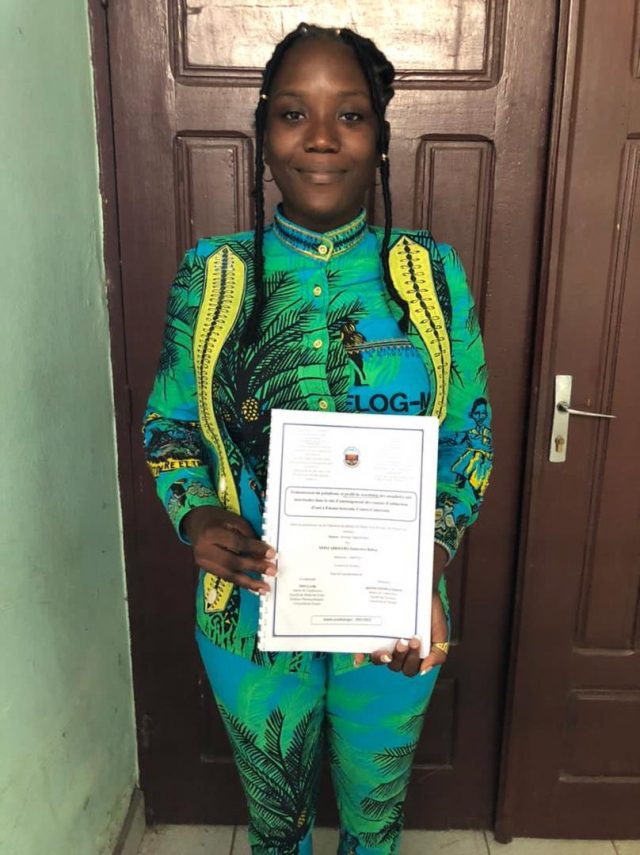It is the main evidence raised by Raïssa Nfini while presenting her Master’s thesis on May 27, 2022 at the Faculty of Sciences (FS), University of Douala.

Raissa Nfini holding her Master’s Dissertation in her hands
According to Raissa, the construction of dams and irrigation systems has a direct and significant consequences on the environment. In Cameroon, similar observations have already been made in the past. A study recently conducted in the locality of Nyabessan, South Region, Cameroon by Dr Lily Mbackop, researcher at OCEAC (Organisation de Coordination pour la Lutte contre les Endémies en Afrique Centrale) revealed that, changes in the composition and density of malaria vectors after the construction of the Memve’ele hydroelectric dam started in 2012. These changes are responsible for the increased risk of malaria in this locality. An exponential growth was observed in the density of the populations of Anopheles gambiae s.l known to be one of the major vectors of malaria. It appears that the application of hydraulic equipment projects as the one in Emana-benyada creates favorable environment for the proliferation of malaria vectors through the establishment of breeding sites, which constitute a serious threat to the health of local residents.
This study was carry out with the general objective of evaluating the transmission of malaria and the level of susceptibility of anopheles to insecticides in Emana-benyada. To achieve this, Raissa Nfini made an inventory of the diversity of Culicidae fauna in Emana-benyada, then, she determined some entomological indicators of malaria transmission in the field before testing the susceptibility of malaria vectors to insecticides in her study area. In conclusion, the study shows that, the study site is host to a diversity of vectors, specifically Mansonia, Culex, Aedes and Anopheles. There are also several species of Anopheles, including Anopheles gambiae s.l, Anopheles funestus and Anopheles nili. At the end of this study, she observed that Anopheles gambiae s.l is the most aggressive species in the locality, follow by Anopheles funestus. On the base of the evidence obtained, she concludes that Anopheles gambiae s.l is responsible for the transmission of malaria, with Anopheles funestus in second place. Local strains have shown resistance to pyrethroid, and carbamate insecticides recommended by the World Health Organization (WHO). In view of the concerns generated by this study, Raïssa Nfini recommends strengthening the awareness of the local populations living around the dam on issue pertaining to the appropriate use of mosquito nets and regular cleaning of surroundings and dwellings. The young researcher focused on the treatment of breeding sites with larvicides. With regards to the short- and medium-term follow-up to this work, she intends, firstly, to move on to determine the specific composition of the vector population using molecular tools, then assess the intensity of the resistance as well as the mechanisms involved and their impact on the transmission of malaria. This work by Raissa Nfini is part of her master’s dissertation entitled, “the transmission of malaria and the sensitivity profile of Anopheles mosquitoes to insecticides in the development site of the water supply canals in Emana-benyada”, Centre region of Cameroon. The jury made up of lecturers from the Faculty of Sciences, University of Douala approved this study. For the young researcher, it is the end of a stage, but the beginning of a new academic adventure.






